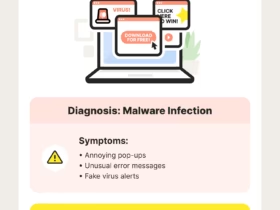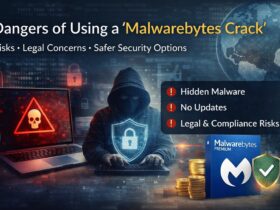Have you ever wondered how hackers manage to break into even the most secure systems? The answer often lies in zero day attacks—cyberattacks that exploit unknown vulnerabilities before developers have a chance to fix them. These attacks can silently compromise your systems and data with no warning.
In this blog, we’ll explore what zero day attacks are, why they’re so dangerous, how attackers use them, and most importantly, how you as an IT manager, CEO, or cybersecurity professional can protect your organization in 2025.
What Are Zero Day Attacks?
A zero day attack exploits a software or hardware vulnerability that is unknown to the vendor and has no available patch. Because no fix exists, attackers can exploit the weakness freely until it is discovered and resolved. These “zero days” represent the gap in time between the vulnerability’s discovery by hackers and its patch release.
Such attacks can target operating systems, applications, firmware, or even hardware components.
Why Are Zero Day Attacks So Dangerous?
- Unknown and Unpatched: Security teams can’t defend against what they don’t know.
- High Impact: Usually escalates privileges or steals data silently.
- Hard to Detect: They often bypass traditional antivirus and firewall protections.
How Zero Day Attacks Work?
Attackers typically discover or purchase unknown vulnerabilities, then develop exploits to use them. These exploits can infiltrate systems through phishing emails, malicious websites, or infected software.
Once inside, attackers gain unauthorized access, install backdoors, steal sensitive data, or manipulate systems covertly.
How to Protect Against Zero Day Attacks?
- Implement a Multi-Layered Defense
Relying on just one security mechanism isn’t enough. Combine firewalls, antivirus solutions, intrusion detection, endpoint detection and response (EDR), and application controls. Each layer reduces the risk and helps catch threats missed by others.
- Apply a Zero Trust Architecture
Assume no user or device within or outside your network is trusted by default. Always verify identity and limit access to only what’s necessary.
- Keep Systems and Software Updated
Although zero day attacks exploit unknown flaws, regularly patching known vulnerabilities reduces your overall attack surface.
- Use Threat Intelligence and Behavioral Analysis
Monitor for unusual activities, indicators of compromise, and emerging threat reports from trusted sources to act swiftly.
- Conduct Regular Security Audits and Penetration Testing
Proactively identify weaknesses in your environment before attackers do.
- Employee Education
Train employees to recognize phishing, social engineering, and other common intrusion vectors.
Industry-Specific Risks and Actions
- Healthcare: Protect patient data rigorously due to regulatory requirements.
- Finance: Monitor transactions closely for suspicious anomalies.
- Technology: Harden development pipelines against vulnerabilities.
FAQ
Q1: What is the difference between a zero day exploit and a zero day attack?
A zero day exploit is the actual code that takes advantage of a vulnerability; a zero day attack is the execution of this exploit in the real world.
Q2: Can zero day attacks be completely prevented?
While no defense is perfect, layered security and proactive threat intelligence dramatically reduce risks.
Q3: How quickly are zero day vulnerabilities typically patched?
Once discovered, vendors may release patches anywhere from days to weeks depending on severity.
Q4: Are zero day attacks only used by highly skilled hackers?
Not always; some exploits are sold on underground markets to less-skilled actors.
Q5: How important is endpoint security in preventing zero day attacks?
Crucial—EDR tools can detect abnormal behaviors even from unknown threats.
Conclusion
Zero day attacks are among the most challenging threats facing organizations in 2025. Staying protected means adopting a layered defense, continuous monitoring, and educating your teams. By understanding zero days and fortifying your security posture, you minimize risks and stay ahead of cyber adversaries.
Start by assessing your current defenses today and building a plan tailored to your industry’s unique risks.
This blog is designed for IT professionals, C-suite executives, and cybersecurity teams aiming to build resilient defenses against evolving threats.













Leave a Reply
View Comments